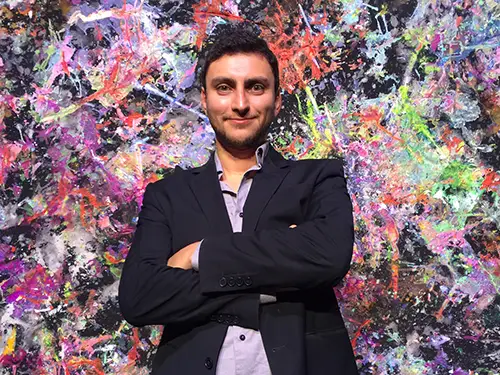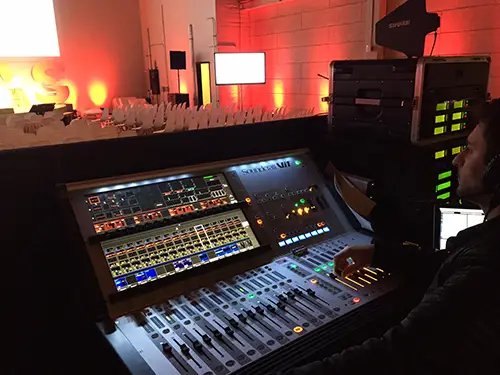Yurii Barybin is a technical director, production manager, and live sound audio engineer from Kyiv, Ukraine. In this interview he talks about his love for music and his invention Diversity Source Audio Mixing Technique, an audio system design that helps musicians hear themselves better on stage.
Music has been your passion for a long time. How did it start?
Everything started in my childhood. My father played for us the best music in different styles from all over the world. So I’ve got a lot of inspiration from classic, jazz, rock, pop, ethnic music that I heard at home. It developed my musical taste and skills of understanding nuances and aspects of audio. My father is a vocalist so he explained how singers form their sound using a variety of vocal techniques.
How did you start your career as a sound engineer?
In high school I formed a band. I played the guitar, my brother played drums and my friends played bass and keyboards. We had rehearsals in a small room and my guitar set up was placed right next to the mixing console. So I had to mix audio for our rehearsals. I learned a lot about it and had opportunity to experiment with sound. Then other bands started to invite me to mix their live performances.
Do you have a specific education?
Sure. I graduated from the National Theater, Cinema and Television University in Kiev. I decided to learn audio design there because they are the best in Ukraine. I’ve got a good basis for my professional career.
What are the three most important elements of live sound audio?
Mixing audio for live performances is more complicated and stressful than mixing in a recording studio. I don’t have a second chance at a concert venue. The show is happening live now. And it has to sound perfect. We can’t redo or replay or mix it again. Live sound engineers can’t make mistakes. Mixing in front of the house for the audience or monitors for performers is a huge responsibility.
How did you come up with the idea of Diversity Source Audio Mixing Technique?
Creating a good monitor mix for performers on stage is one of the most complicated tasks for audio engineers. I spent a lot of time learning performing peculiarities of all musical instruments that I usually have on stage. I learned how musicians form their sounds, what equipment set up do they use, and how performers prefer to hear themselves in the monitors.
Then I came up with idea to split signals from different sources (like drums, bass, guitars, vocals, etc.) and send them to different stage monitor loudspeakers instead of sending all instruments into one mix. This allows lead performer to hear themselves on top but not separately from their accompaniment (other instruments) and to have a good balance of vocals, harmony from keyboards, guitars and rhythmic component from drums.
How useful is it for musicians performing live?
This mixing technique allows me to create more sophisticated monitor mixes that sound louder and brighter. That is essential for musicians. They can hear more nuances from stage monitors that allow having better performing control on stage.
Which artists and companies have used it?
I used Diversity Source Audio Mixing Technique working with internationally recognized artist such as Moldovan singer Dan Balan and Ukrainian artists Tina Karol, Okean Elzy, Lama, Quest Pistols.
In the US, I consulted Big Time Operators, USMP Group, JK Music Group about events with appearance of Mariah Carey, Stevie Wonder, Brandon Flowers, Disclosure, Will.I.Am, Moby, Miguel, Travis Scott, Mika Newton, Jamie Foxx, and The Weeknd.
What are you plans for the future?
I started a new show production company in Los Angeles that creates and designs audiovisual concepts for festivals, concerts, conventions, corporate and private events. Here I’m using all my knowledge and experience to provide the best quality service in show industry.



